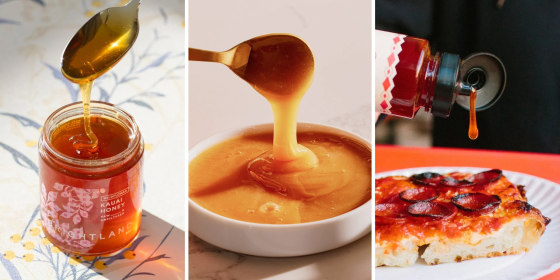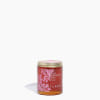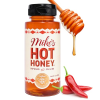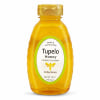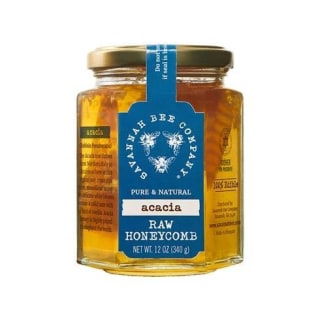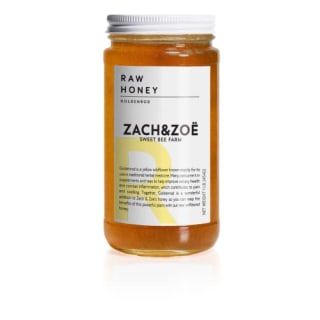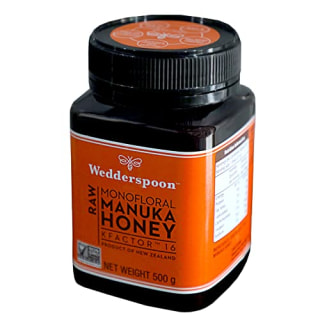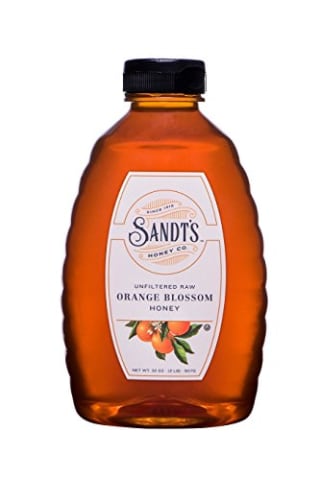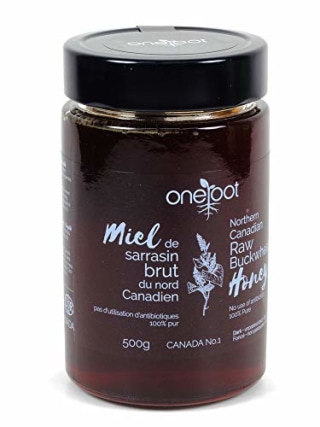The first image that comes to mind when I think about honey is a bear-shaped bottle filled with a golden, sweet, sticky liquid. While the pantry staple is known for its culinary and medicinal benefits (you can add it to coffee or tea, cook and bake with it or eat spoonfuls of it when sick), not all honey is the same. Some options taste earthy and are drizzle-able, while others have a fruity flavor and are so creamy you can scoop them out of the jar.
To learn more about the difference between filtered, unfiltered, raw and organic honeys, I spoke with experts (including beekeepers), and shared tips and tricks for getting the most out of the container in your kitchen.
SKIP AHEAD How I picked the best honeys | The best honeys of 2025 | Filtered, unfiltered, raw and organic: What’s the difference? | Tips for cooking and baking with honey | Why trust NBC Select?
Want more from NBC Select? Sign up for our newsletter, The Selection, and shop smarter.
What is honey?
Honey is a sweet, sticky substance that bees produce. They pull nectar from flowers and plants, bring it back to their hives and pack it into honeycomb, which is a structure made from hexagon-shaped beeswax cells. Then, bees turn nectar into honey by drying it out. To do so, they create a breeze with their wings and cover the cells with a cap made from fresh beeswax.
Next, beekeepers or manufacturers come in, who all take honey from the hive to the jar differently, but the basic process involves the following, says Johnson: collecting honeycomb from the hive, removing the wax caps from the cells, letting the honey drip into a container, and sifting out debris like wax and bee parts. Some people heat the honey before bottling it (learn why our experts don’t recommend doing that below) or leave it as is. Finally, producers bottle honey into jars or squeezy bottles so it’s ready for you to enjoy.
How I picked the best honeys
While shopping for honey, experts recommend I consider the following factors:
- Flavor: Honey gets its flavor from the flowers and plants that bees pull nectar from during the first stage of their production process, says Summer Johnson, who owns Zach & Zoe Sweet Bee Farm, one of our favorite Black-owned businesses. (Any inclusion of Zach & Zoe Sweet Bee Farm products in this article was made independently of Johnson.) Different types bloom in different areas, so location impacts taste, and each region produces its own unique honey, similar to coffee, olive oil and wine. Seasons also affect honey’s flavor since what’s available for bees to collect nectar from changes at varying points in the year. Keep in mind that honey often gets its name from the flowers and plants that bees collect nectar from — for example, goldenrod honey is derived from goldenrod flowers, and clover honey is derived from clover plants.
- Unfiltered: Regardless of your flavor preferences, all the experts I spoke to recommend buying unfiltered or raw honey opposed to filtered honey. (Raw honey is safe to eat for those over 1 year old, unlike raw milk, which is not safe for anyone to consume, according to the U.S. Centers for Disease Control and Prevention.) “Unfiltered” and “raw” are often used interchangeably to describe honey that hasn’t gone through a heat treatment or pasteurization process before it’s bottled, which means it’s in its rawest form when it gets to you and is filled with pollen, vitamins, enzymes and minerals. (Learn more about unfiltered v.s. raw v.s. filtered honey below.)
- Pure: Pure honey doesn’t have any artificial additives or quality-degrading fillers. Flavors like chili, lavender and cocoa can add to the overall taste, but to preserve the “pure” quality make sure any infused ingredients are coming from natural sources, like lemon juice, chili peppers, lavender and mint extract, rather than artificial ingredients, says Johnson.
- Texture: Most people are familiar with liquid honey, which, depending on factors like the types of flowers and plants it comes from and the temperature it’s stored in, can make it smooth, gritty or somewhere in between, says Johnson. Raw and unfiltered honey also crystallizes over time, so you might eventually notice little solid, crunchy bits in it. You can also buy whipped honey, which is often called creamed or spun honey. It’s crystallized honey that has very fine crystals, giving it a smooth, solid, scoopable texture, similar to that of creamy peanut butter. It’s also more opaque in color compared to liquid honey.
- Intended use: Once you figure out what flavors you like, think about when you’d most enjoy eating or drinking each one. You might prefer a creamy honey with herbal notes to spread on your toast, and a sweeter, syrupy, lighter honey to stir into your tea.
The best honey of 2025
To determine which types of honey you prefer, I recommend trying a few options and keeping track of your likes and dislikes. Below, I rounded up pure honeys made from different flowers and plants across regions, all of which, except Mike’s Hot Honey, are raw or unfiltered, per expert guidance. I’ve tried many of the honeys on this list, and some come recommended by NBC Select staff.
Brightland Wildflower Honey
“Wildflower honey makes up the bulk of the honey we have here in the United States,” says Bruce Shriver, owner of Gowanus Apiary. “Wildflower simply means that bees collect nectar from a variety of sources and we can’t attribute it to one single source.” Bees pull nectar for this Brightland honey, which the brand sent me a sample of, from local California wildflowers, giving it an amber color and a deep, fruity flavor with notes of plum, cherry and molasses. It also resembles molasses in texture — it’s thick, very sticky and syrupy. The honey comes in a smaller jar, but I only use a little at a time since its flavor is quite pronounced.
Savannah Bee Company Acacia Honeycomb
Acacia honey has light, floral notes, and some people taste hints of vanilla, says Bruce Shriver, owner of Gowanus Apiary. To make it, bees collect nectar from flowers on black locust trees. Savannah Bee Company sells its acacia honey with a piece of honeycomb inside the jar — when liquid honey and honeycomb are packaged together, it’s called chunk honey. Honeycomb is all-natural, brand new beeswax, says Shriver, and some people chew on it and spit out, similar to gum, or swallow it.
Alvarez is a fan of Savannah Bee Company and says she’s tried almost all of the brand’s varieties. “Whenever I’m in the South, I always try to stop at a Savannah Bee Company store to restock because they make some of the most delicious honey ever,” she says. “Each type has such a distinct taste that’s rich and bold. It elevates whatever I’m eating it with.”
Zach & Zoe Sweet Bee Farm Goldenrod Honey
Zach & Zoe Bee Farm is in New Jersey, where one of the most prevalent flowers is solidago, commonly called goldenrods. “When bees pollinate [the flower], it has a really buttery, rich flavor,” says Johnson. I first tried the brand’s goldenrod honey in 2018 at its Chelsea Market booth in New York City, and I’ve been a repeat buyer ever since. I can taste it in my tea and on my yogurt when I drizzle it on top, and while it sweetens my pancake batter and biscuits, the flavor isn’t overpowering. I also appreciate that the jar’s opening is wide enough for me to fit utensils into, making it easy to measure, especially when I’m baking. The honey’s texture is somewhere between thin and thick — when I dip a spoon into it, the liquid clings to it for a second before quickly drizzling off.
Wedderspoon Raw Monofloral Manuka Honey
Wedderspoon’s manuka honey is harvested and packed in New Zealand. It has a creamy texture and an intense, rich, almost toasty flavor, similar to caramel and toffee, which it also resembles in color. NBC Select associate reporter Bianca Alvarez always keeps a jar at home. “When I’m sick, I reach for my Wedderspoon manuka honey because it’s so thick and soothing, so it helps heal my sore throat,” she says. “I eat it as is by the spoonful or mix it in with lemon and hot water to make a tasty yet healing concoction.”
Mike’s Hot Honey
Experts recommend against buying filtered honey, but you can make an exception for hot honey, like this one, which is typically filtered when it’s infused with chilis to blend the ingredients together. Out of all the hot honeys on the market, Mike’s Hot Honey is NBC Select editor Cory Fernandez’s favorite variety. “This is my go-to condiment for breakfasts on the weekends,” he says. “I love drizzling it over avocado toast or cottage cheese with everything bagel seasoning. It’s also a great topping for dips like hummus, especially if your guests enjoy a spicy snack.” Mike’s Hot Honey is made with 100% pure honey, chili peppers and vinegar.
Sandt’s Orange Blossom Honey
If you prefer a fruitier flavor profile, try orange blossom honey. It comes from bees that pollinate orange tree blooms and it has citrusy notes, according to Shriver. Sandt’s Orange Blossom Honey is made from nectar that’s gathered from orange groves, as well as nearby grapefruit, lime and lemon trees in southern Florida, Texas, Arizona and California. It’s light amber in color and smells like orange blossoms, according to the brand.
OneRoot Raw Buckwheat Honey
The flavor of buckwheat honey, which is made from bees pollinating buckwheat plants, is gamier compared to wildflower honey, says Johnson. It’s also slightly bitter, so it’s more of an acquired taste, says Shriver. Bees collect the nectar for OneRoot’s buckwheat honey, which is dark in color, from buckwheat fields in Ontario, Canada.
Honey House Clover Honey
Clover honey is one of the most common types you’ll notice while browsing at your local grocery store, says Ana Maria Huertas,a honey global category merchant at Whole Foods Market. Bees collect nectar from clover plants to make this variety, which has a more mild flavor, says Shriver. Honey House’s Clover Honey has a golden color, a dense, rich texture and comes from clover fields in the Midwest, including areas like South Dakota.
Smiley Honey Tupelo Honey
“As far as I’m concerned, tupelo honey has got to be the most wonderful honey in the world,” says Shriver. He loves its bright, floral flavor, and says it’s highly coveted — beekeepers can only harvest it during a small period of time in the spring, when white tupelo trees bloom in parts of Georgia and Florida, the latter of which is where Smiley Honey is based.
Filtered, unfiltered, raw and organic: What’s the difference?
Filtered honey
Filtered honey is heated, strained through a fine filter and rapidly cooled before being bottled to help prevent it from crystallizing over time, says Huertas. This process removes air bubbles, pollen and other fine particles from honey to give it a smoother texture, stretching it out so there’s more to sell, says Johnson.
All the experts I spoke to recommend against buying filtered honey. The sticky stuff naturally has pollen, vitamins, enzymes and minerals, which is where its health benefits derive from, like throat relieving properties and the ability to help treat eczema, says Dr. Rupam Brar, a pediatric allergist and immunologist at New York University’s Hassenfeld Children’s Hospital. Filtering honey strips it of these nutrients, and causes it to lose some of its flavor, says Johnson.
Raw and unfiltered honey
”Raw” and “unfiltered” are often used interchangeably to describe honey that doesn’t undergo a heat treatment or pasteurization process before being bottled. It doesn’t lose any of its nutrients as it gets transferred from the hive into a container, so honey is in its rawest form when it gets to consumers. (Raw honey, unlike raw milk, is safe for anyone (over 1-year-old) to consume, according to the U.S. Centers for Disease Control and Prevention.) Despite the terms being used interchangeably, there’s a slight difference between them: raw honey isn’t heated at all, but sometimes unfiltered honey is very briefly warmed if it begins to crystallize before it’s bottled, says Shriver.
Since there’s nothing stopping raw, unfiltered honey from naturally crystallizing, you may notice that it looks solid in the jar when you purchase it or after it’s been sitting in your pantry for a while. “For lots of people, that’s sort of a turn off,” says Shriver. “Some people believe that crystallized honey is bad or not fresh, but that’s not true.” Crystallized honey dissolves immediately when you mix it into beverages or food, and you can easily re-liquify it by placing the container in a bowl of warm water until you notice the texture start to change.
Organic honey
Organic honey means that the flowers and plants bees harvest to make it are 100% organic. Making organic honey is very hard to do, says Johnson, and the only way to ensure honey is 100% organic is to quarantine bees in a dome with only organic blooms to harvest nectar from.
Tips for cooking and baking with honey
Because honey is such a sticky ingredient, it can be tricky to measure while cooking and baking. Here are two tips for easily doing so, plus what you can substitute honey with if you run out of it in the middle of whipping up a dish.
Hot water trick
Before pouring honey into a measuring cup or spoon, run the utensil under hot water until it feels warm to the touch. Doing so prevents honey from sticking to the utensil so it easily slides off. You can also use this trick for other sticky ingredients like maple syrup, agave and molasses.
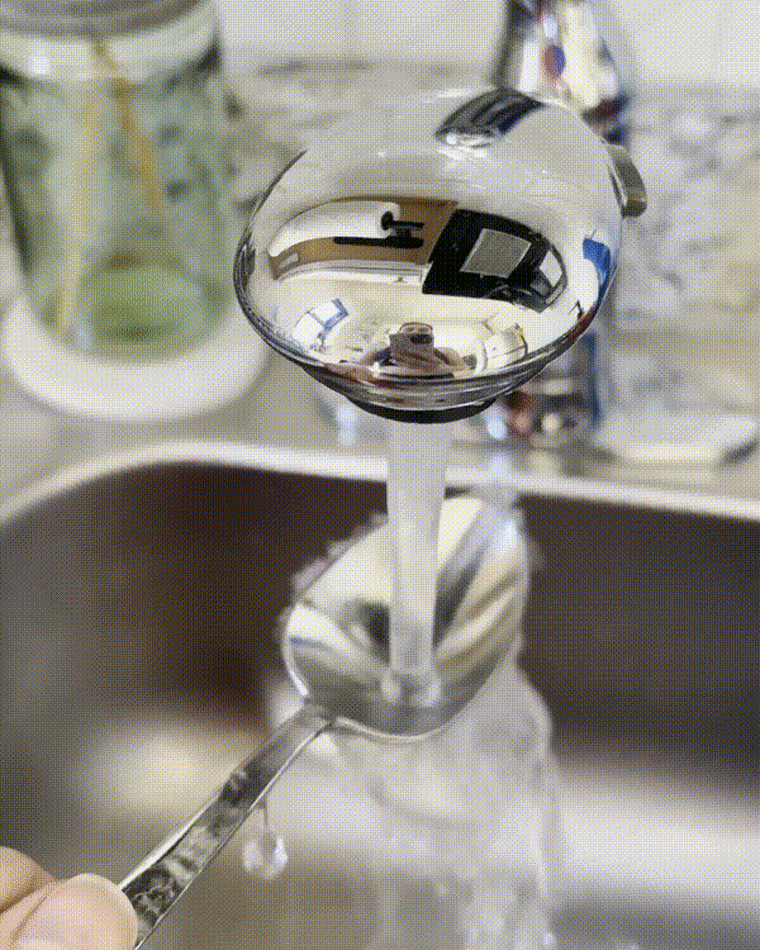
Flour trick
Add flour to a mixing bowl and use the back of your measuring spoon or cup to make an impression in it. Pour the honey into the well to measure that exact amount. You can also use this trick for other sticky ingredients like maple syrup, agave and molasses.
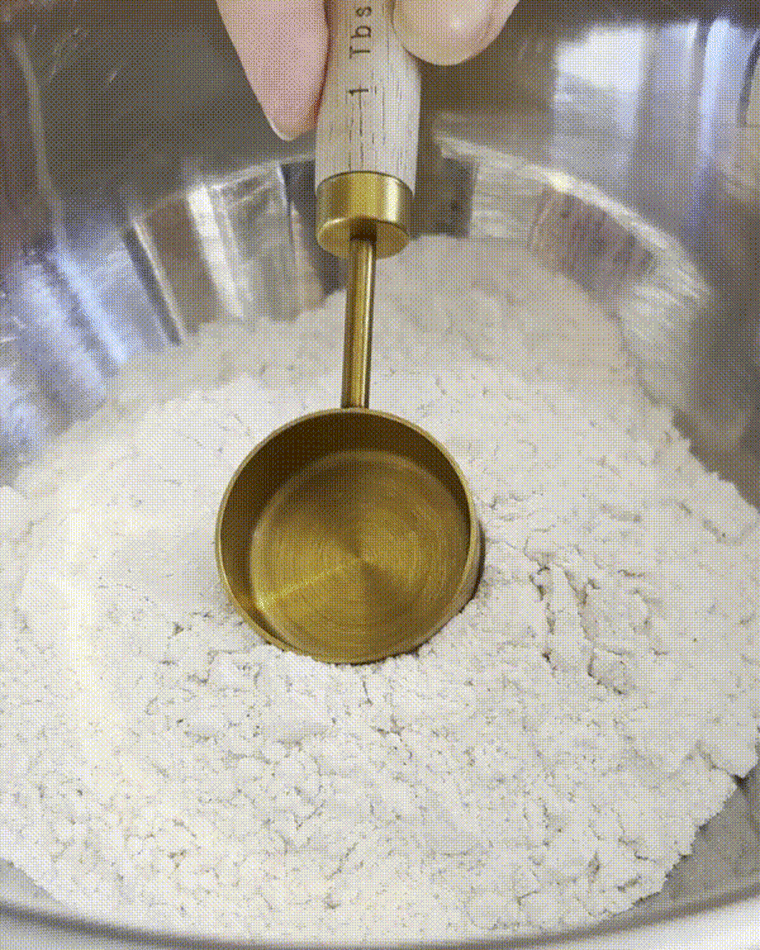
Meet our experts
At NBC Select, we work with experts who have specialized knowledge and authority based on relevant training and/or experience. We also ensure that all expert advice and recommendations are made independently and without undisclosed financial conflicts of interest.
- Bruce Shriver is a beekeeper and owner of Gowanus Apiaries in Carroll Gardens, Brooklyn.
- Summer Johnson is the owner of Zach & Zoe Sweet Bee Farm. (The inclusion of products sold by Zach & Zoe Sweet Bee Farm in this article was made independently of Johnson.)
- Ana Maria Huertas is a honey global category merchant at Whole Foods Market.
- Dr. Rupam Brar is a pediatric allergist and immunologist at New York University’s Hassenfeld Children’s Hospital.
- Trung Vu is a chef-instructor of pastry and baking arts at the Institute of Culinary Education.
Why trust NBC Select?
I’m a reporter at NBC Select who’s covered food and beverages for five years, including writing about topics like non-alcoholic wine and spirits, chocolate, salt and olive oil. I also frequently test related kitchen products. To write this article, I spoke to five experts about how to shop for honey, how to use it for cooking and baking, and what its benefits are.
Catch up on NBC Select’s in-depth coverage of tech and tools, wellness and more, and follow us on Facebook, Instagram, Twitter and TikTok to stay up to date.
